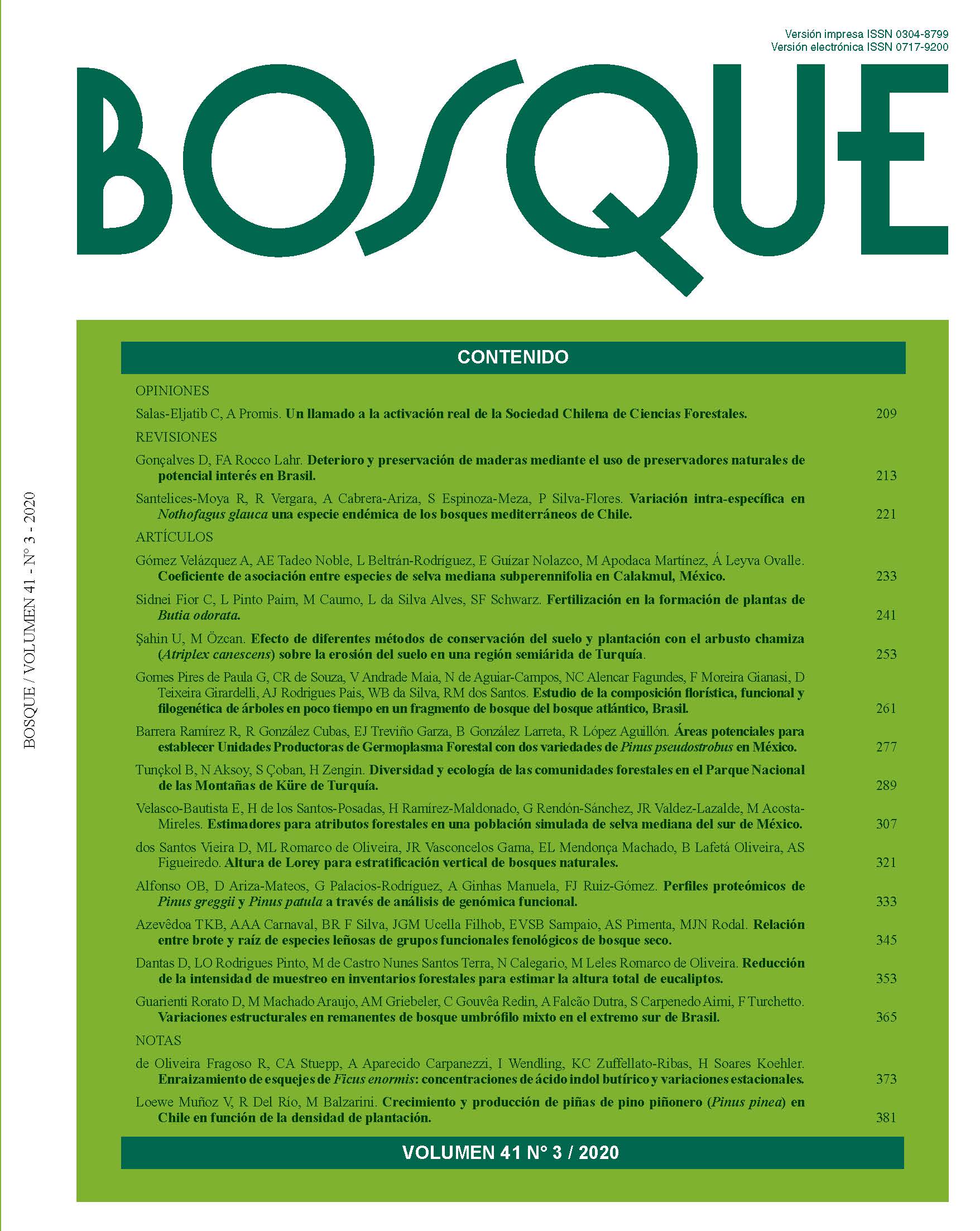Potential areas to establish Forest Germplasm Production Units with two varieties of Pinus pseudostrobus in Mexico
Main Article Content
Abstract
Areas with potential to establish Forest Germplasm Production Units (UPGF) with two varieties of P. pseudostrobus were determined. The objectives were (1) to model the current potential distribution of Pinus pseudostrobus var. pseudostrobus and P. pseudostrobus var. apulcensis using MaxEnt algorithms, and (2) to propose areas to locate the best individuals and establish UPGF in Michoacán and Oaxaca, Mexico. For these purposes, 2,451 data of presence obtained from own field records, Forest Biometric System, Global Biodiversity Information Facility and MEXU National Herbarium were used, as well as 19 predictor variables. The 75 % of the records were used for training and 25 % in validation. The adjustment and predictive capacity of ten models was evaluated; eight with 1,000 interactions and two with 500 were evaluated through precision tests of AUC (Area Under the Curve), ROC-standard (Receiver Operating Characteristics) and partial ROC. The models indicated that the two varieties present similar zones of potential distribution in a portion of the Neovolcanic Axis and Sierra Madre del Sur. The environmental variables with the most important contribution to the model for the pseudostrobus variety were those related to temperature; and for the apulcensis variety, temperature and precipitation. The establishment of UPGF can be carried out in areas of optimal growth; in addition, the data generated allow reducing the time and cost for the selection of the best individuals to be included in genetic improvement programs.

